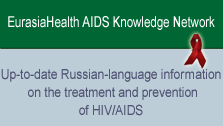Resources for Health Professionals and Patients
| Adherence to HIV Antiretroviral Therapy | |
Attached file: |
 (Russian, 699.3 kb)
Adherence to HIV Antiretroviral Therapy
(Russian, 699.3 kb)
Adherence to HIV Antiretroviral Therapy
|
Link to document(s) | http://www.hivinsite.com/In... |
Author(s): | E. L. Machtinger, D. R. Bangsberg. |
Document type: | Monographs, Reports, and Book Chapters |
Language: | English, Russian |
Primary area(s) of focus: | HIV/AIDS |
Secondary areas of focus: | HIV’s effect on the systems of the human body |
Submited by: | Victor Stanilevskiy |
Date of entry: | June 24, 2006 |
Pages: | 52 |
| In countries with broad access to effective antiretroviral therapy (ART), the clinical benefits have been dramatic. Far fewer people are progressing to AIDS, hospital AIDS wards have practically emptied, and the age-adjusted death rate from HIV/AIDS has declined by more than 70%.Adherence to ART has emerged as both the major determinant and the Achilles' heel of this success. Antiretroviral adherence is the second strongest predictor of progression to AIDS and death, after CD4 count. Incomplete adherence to ART, however, is common in all groups of treated individuals. The average rate of adherence to ART is approximately 70%, despite the fact that long-term viral suppression requires near-perfect adherence. The resulting virologic failure diminishes the potential for long-term clinical success. Drug-resistant strains of HIV selected through ongoing replication in the presence of ART also can be transmitted to uninfected or drug-naive patients, leaving them with fewer treatment options.Nonadherence may eventually undermine the dramatic improvements in HIV-related health parameters seen in resource-rich countries and expected in developing countries as ART becomes more widely available. | |
Overall user rating: | Not yet reviewed |

 Print-friendly View
Print-friendly View

